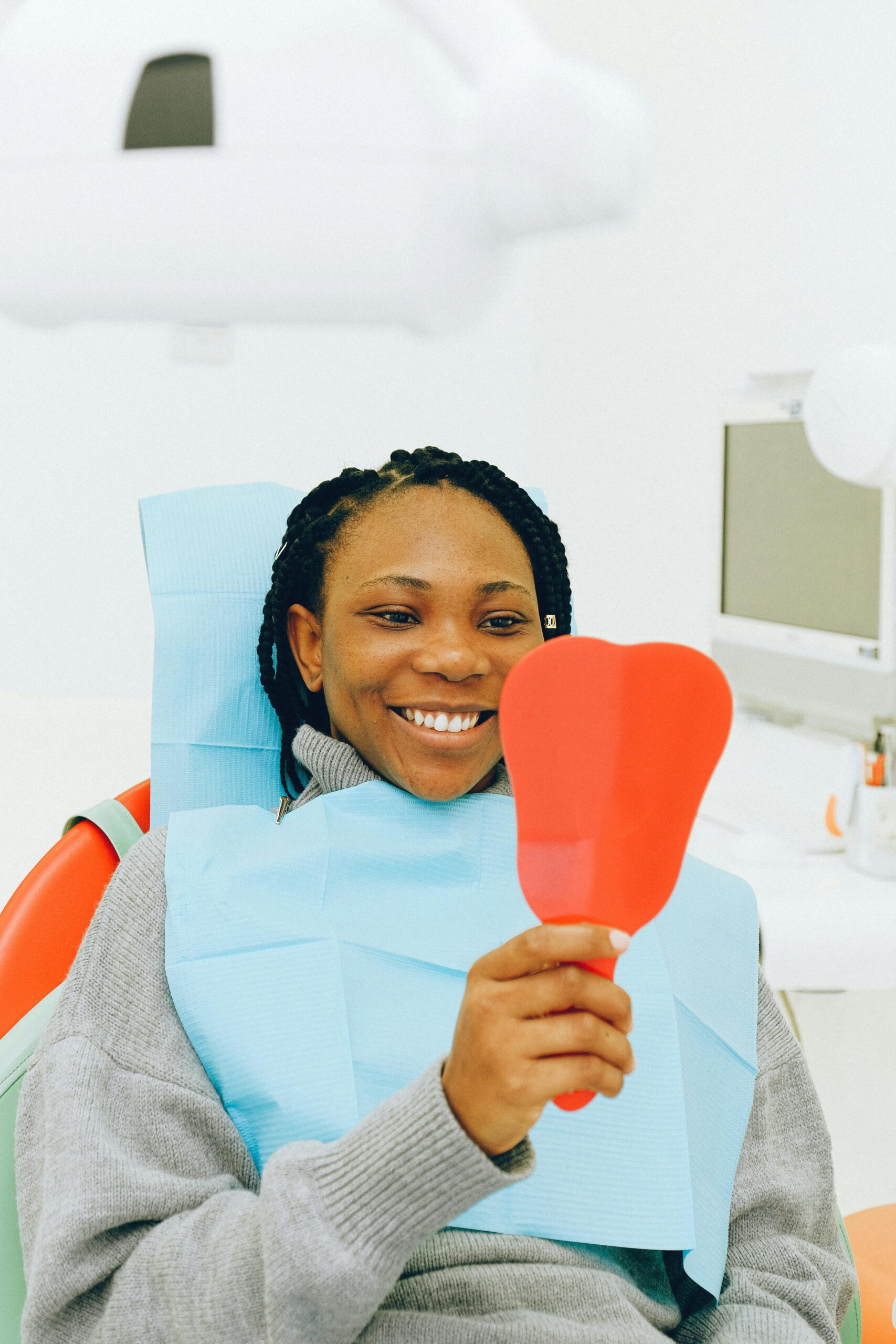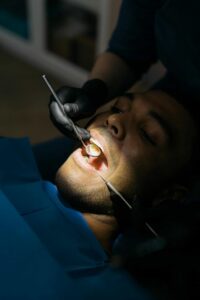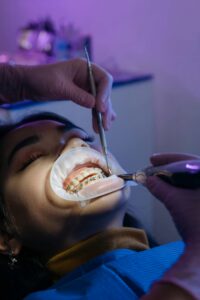In a world where first impressions matter, a confident smile is invaluable. For many teens, parents, and orthodontic patients, braces are the gateway to achieving that perfect smile.
But how do braces work exactly, and what can you expect from the orthodontic treatment process?
This blog post unravels the intricacies of braces, offering insights into their function, types, and the life-changing benefits they bring. You’ll discover everything from the basics of how braces move teeth to life after braces, equipping you with the knowledge to make informed decisions about orthodontic care.
Understanding the Basics of Braces
Braces are more than just metal brackets and wires. They are sophisticated devices designed to correct misaligned teeth and jaws, improving both function and aesthetics.
Traditional metal braces consist of metal brackets adhered to the teeth and connected by archwires, which apply gentle pressure to move teeth into proper alignment over time. But the world of orthodontics has evolved, offering various types of braces to suit individual needs.
Different Types of Braces
When considering braces, it’s essential to understand the options available. Traditional metal braces are the most common, known for their effectiveness and affordability.
However, for those seeking a more discreet option, there are clear aligners like Invisalign, which are virtually invisible and removable. Lingual braces, placed on the back of the teeth, offer another subtle alternative.
Each type of brace has its pros and cons, so it’s crucial to consult with an orthodontist to determine the best fit for your needs.
The Pros and Cons
Traditional metal braces are highly effective but can be noticeable and require certain dietary restrictions.
Clear aligners offer discretion and convenience but may not be suitable for severe cases.
Lingual braces provide invisibility but can be uncomfortable initially. Understanding these differences helps patients make informed choices and sets realistic expectations for the treatment process.
Now that you know how braces work and the different types, let’s look at the process.
The Process of Getting Braces
Deciding to get braces is a significant step toward achieving a healthy, confident smile. The process begins with an initial consultation and assessment, where the orthodontist evaluates your dental health and discusses treatment options.
This personalized approach ensures that each patient receives the best possible care tailored to their unique needs.
Customization and Fitting
Once a treatment plan is established, the customization and fitting of braces commences. This involves creating a mold or digital scan of your teeth to design the perfect fit.
The braces are then applied, a process that may take a few hours but is generally painless. Afterward, you’ll receive detailed instructions on how to care for your new braces.
What to Expect During and After Application
Adjusting to braces can be a learning curve, especially when it comes to eating and speaking. Initial discomfort is normal, but it typically subsides within a week.
Regular follow-up appointments ensure the braces are working as intended, and any necessary adjustments are made to keep the treatment on track.
Day-to-Day Life with Braces
Living with braces requires some lifestyle adjustments, but the benefits far outweigh the temporary inconveniences. Eating may require caution to avoid damaging the braces, and speaking might feel different initially.
However, with time and practice, these activities become second nature.
Adjusting to Eating and Speaking
Certain foods, like hard candies and sticky snacks, should be avoided to prevent damage to the braces. Cutting food into smaller pieces and chewing slowly can help make eating more manageable.
Speaking clearly might take practice, but over time, most people adjust without issue.
Care and Maintenance
Daily care is crucial for maintaining oral health and ensuring optimal results. Brushing and flossing require special attention to clean around the brackets and wires effectively.
Orthodontic tools, such as interdental brushes and water flossers, can make this task easier and more efficient.
Progress and Adjustments
The road to a straighter smile involves regular check-ups and adjustments to the braces. These appointments are essential for tracking progress and making necessary changes to the treatment plan.
It’s an exciting time as you start to see visible improvements in your smile.
Regular Follow-Up Appointments
Regular visits to the orthodontist allow for monitoring of the treatment’s progress. Adjustments are made to the wires and brackets to ensure the teeth are moving correctly.
These appointments are crucial for keeping the treatment on schedule and achieving the desired results.
Tracking Progress
Orthodontic treatment is a gradual process, and tracking progress helps maintain motivation. Taking photos before and during treatment can provide a visual timeline of improvements, reinforcing the value of persistence and patience.
Life After Braces
The day the braces come off is a moment of triumph, revealing a beautifully aligned smile. But the journey doesn’t end there.
Retainers play a vital role in maintaining the results achieved with braces, ensuring your smile remains perfect for years to come.
The Removal Process
Removing braces is a straightforward procedure that involves carefully detaching the brackets and wires. This is followed by a thorough cleaning and polishing of the teeth, leaving you with a dazzling smile.
Patients often feel a sense of accomplishment and relief at this stage.
Importance of Retainers
Retainers are crucial for preventing teeth from shifting back to their original positions. Different types of retainers are available, including removable and fixed options.
Wearing them as directed by your orthodontist is essential for maintaining the results of your orthodontic treatment.
Common Questions and Concerns
It’s natural to have questions and concerns about braces, whether you’re a teen wearing them for the first time or a parent considering them for your child. Addressing these common queries like how do braces move or what do braces do can provide reassurance and clarity.
With that being said, here are some common questions and concerns:
Q: Will braces hurt?
A: Most people experience some discomfort during the initial adjustment period, but it is usually mild and temporary. Orthodontists often provide wax to soothe any sore spots on the inside of the mouth.
Taking over-the-counter pain medication can also help.
Q: Can I still play sports with braces?
A: Yes, but it’s essential to wear a mouth guard to protect your teeth and braces from any impact. Your orthodontist can provide recommendations for the best type of mouth guard to use during sports activities.
Q: How often will I need to visit the orthodontist?
A: It depends on your individual treatment plan, but typically appointments are scheduled every 4-6 weeks for adjustments and progress checks. Your orthodontist may recommend more frequent visits if necessary.
Conclusion: The Journey to a Winning Smile
The journey to a winning smile is a collaborative effort between you and your orthodontist, who are committed to achieving the best results. Understanding how do braces work can simplify the process and highlight the importance of each step.
Braces are a powerful tool in the pursuit of a healthy, confident smile.
For those considering orthodontic treatment, seeking professional advice is the first step toward a brighter future. Dr. Catherine Scheurer McDevitt and the team at A Winning Smile Orthodontics are here to guide you on this exciting journey.
Whether you’re a teen, parent, or patient, our personalized approach ensures a positive experience and stunning results.
Book a consultation today and take the first step toward your winning smile!





